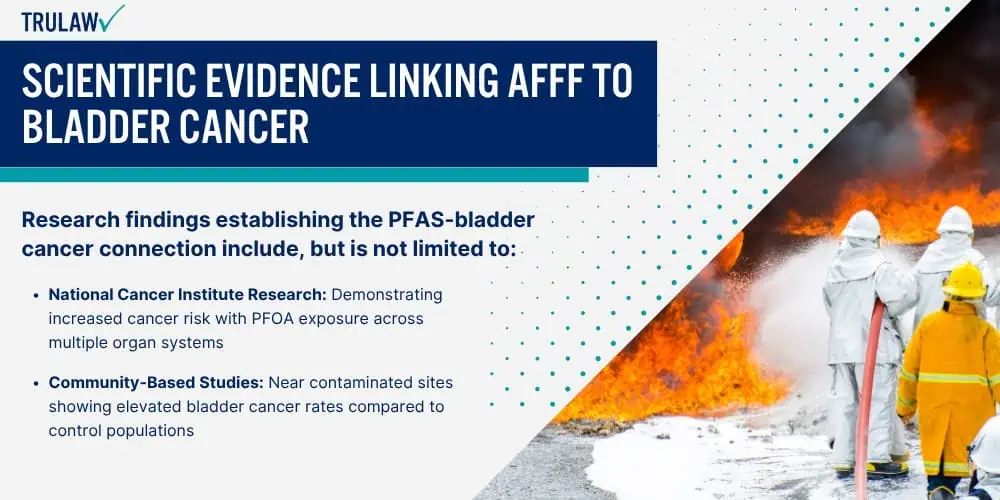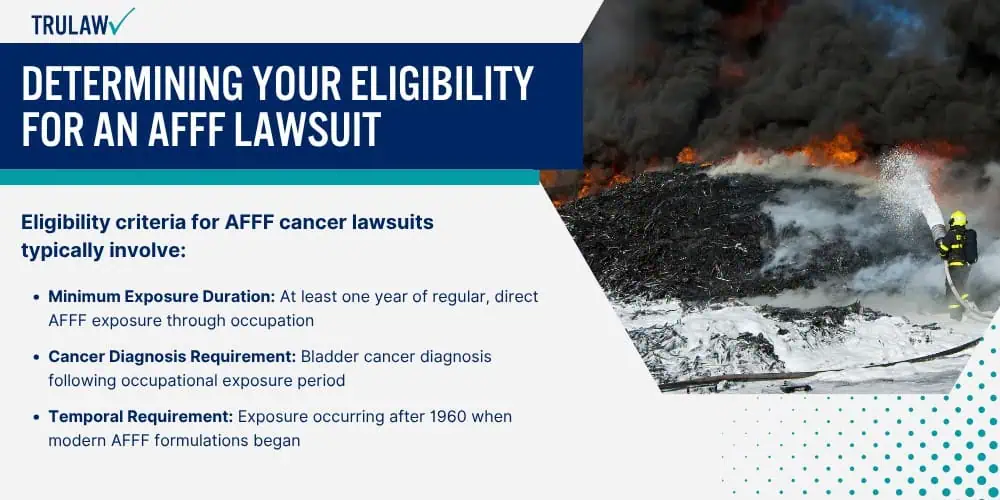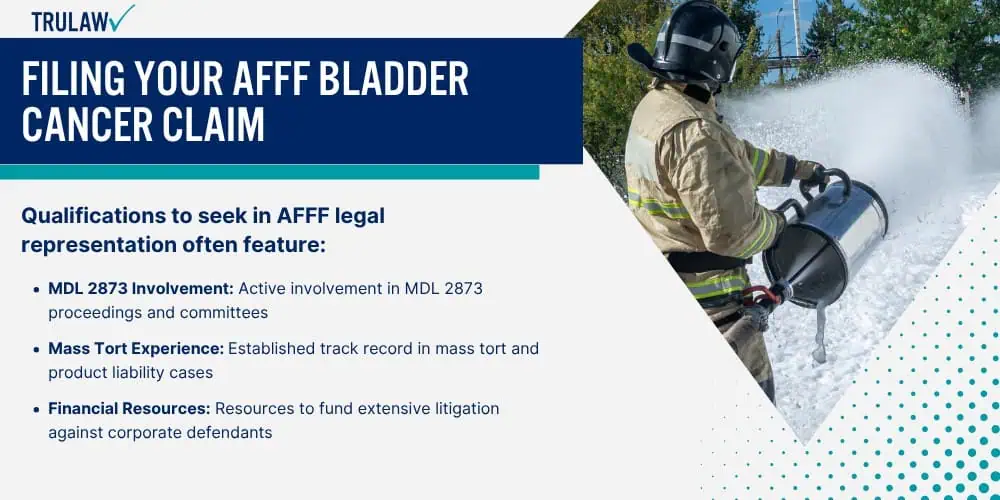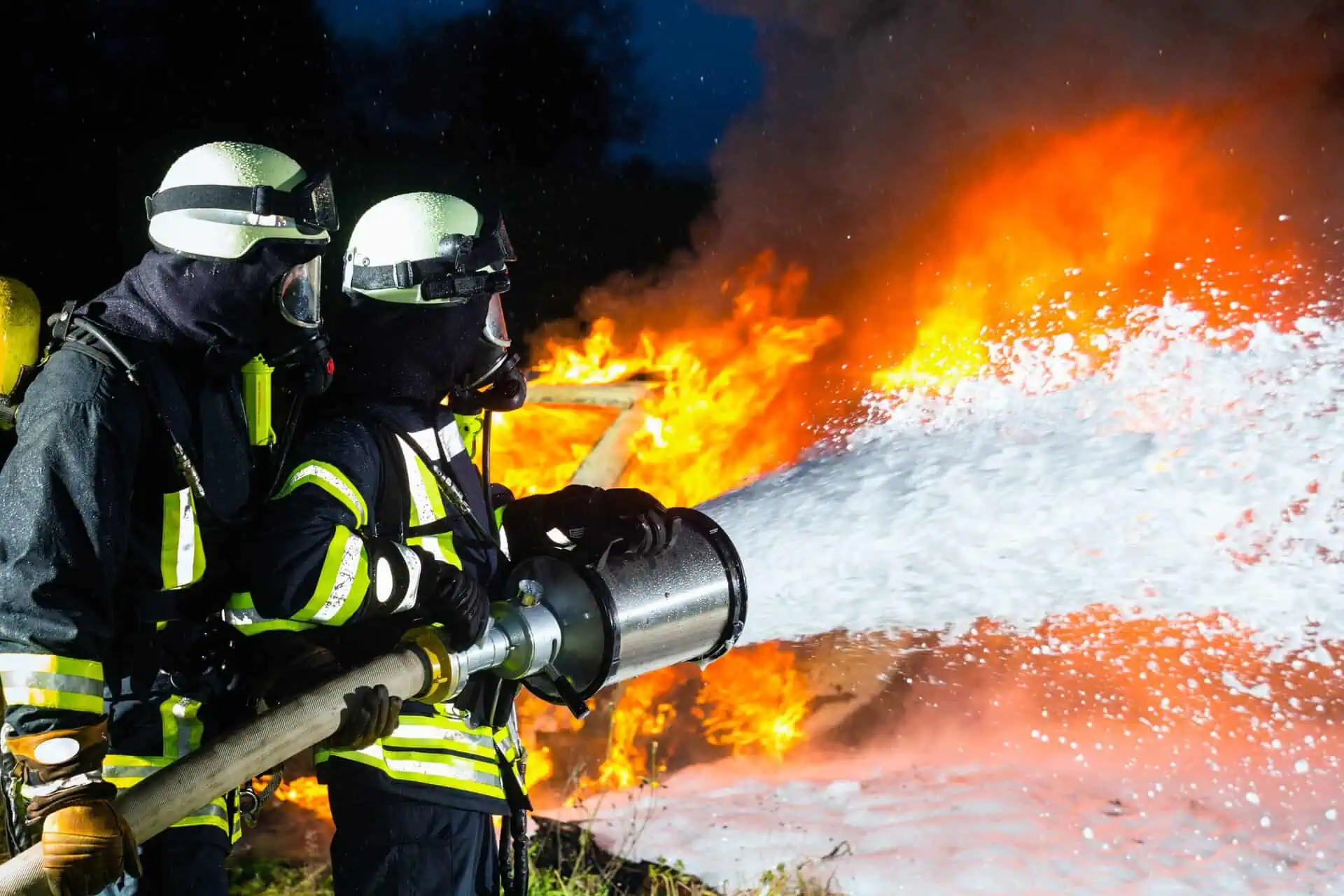Aqueous Film-Forming Foam (AFFF) has served as the primary firefighting foam at military bases, airports, and industrial facilities since the 1960s, containing dangerous PFAS chemicals that persist indefinitely in the human body and environment.
These “forever chemicals,” specifically PFOS and PFOA, have emerged as serious cancer risk factors, with recent studies revealing alarming connections to bladder cancer among firefighters and military personnel who faced regular occupational exposure through training exercises and emergency response activities.
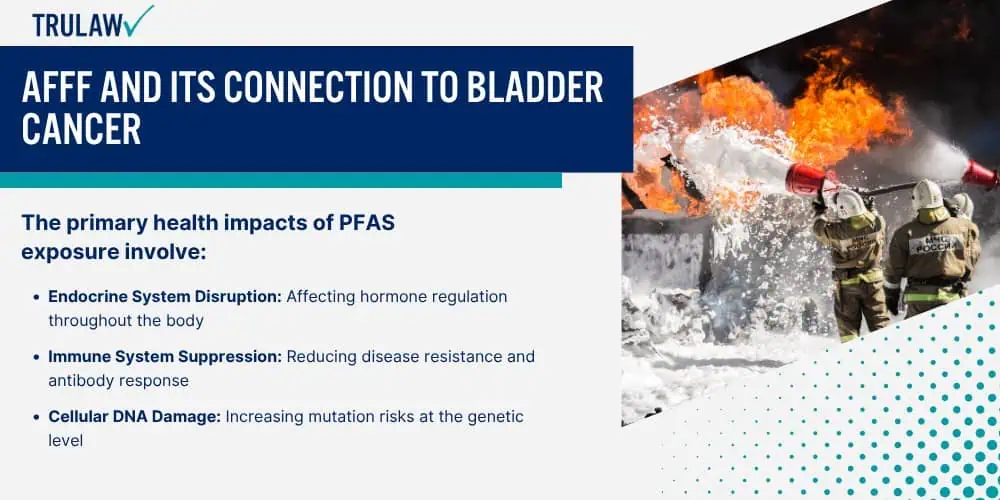
What Makes AFFF Dangerous to Human Health
AFAS toxic chemicals within AFFF foam contain PFOS and PFOA compounds that resist natural breakdown processes and accumulate in human tissue, maintaining half-lives of approximately 3.4 years for PFOS and 2.7 years for PFOA in the body.
These persistent compounds bind to proteins in blood plasma and concentrate in vital organs, causing widespread biological disruption.
The primary health impacts of PFAS exposure involve:
- Endocrine System Disruption: Affecting hormone regulation throughout the body
- Immune System Suppression: Reducing disease resistance and antibody response
- Cellular DNA Damage: Increasing mutation risks at the genetic level
- Oxidative Stress: Triggering inflammatory responses in multiple organ systems
- Impaired Cellular Repair: Compromising the body’s natural healing mechanisms
- Metabolic Dysfunction: Affecting organ systems and energy regulation
Research demonstrates that PFAS accumulates preferentially in the liver, kidneys, and bladder tissue, where these harmful chemicals interfere with normal cellular processes.
The bladder’s direct exposure to PFAS through urine concentration creates particularly concerning risks for cancer development in this organ, with studies also showing increased risks for kidney cancer in exposed populations.
Who Faces the Highest Risk of AFFF Exposure
Military personnel stationed at over 700 contaminated U.S. bases, civilian firefighters, airport firefighters, and chemical plant workers represent the populations with the highest AFFF exposure risks.
These professionals encountered AFFF regularly through training drills, equipment testing, and actual fire suppression activities over decades of service.
Key factors linking AFFF to bladder cancer consist of:
- Firefighters: Conducting regular AFFF training exercises and emergency response
- Military Personnel: Serving at bases with documented PFAS contamination
- Airport Workers: Involved in aircraft fire suppression and safety drills
- Chemical Plant Employees: Handling AFFF systems and industrial safety equipment
- Maintenance Crews: Cleaning firefighting equipment and foam systems
- Emergency Responders: Responding to industrial accidents involving hazardous materials
The Environmental Working Group has documented nationwide PFAS environmental contamination affecting millions of Americans living near military installations, airports, and industrial facilities.
Residential exposure through contaminated drinking water adds another layer of risk for communities surrounding these high-use areas.
The Bladder Cancer Connection Explained
Bladder cancer represents the fourth most common cancer in men and increasingly affects women, with firefighters showing a 9% higher overall cancer risk compared to the general population.
PFAS chemicals concentrate in bladder tissue through urinary excretion, creating prolonged direct contact between carcinogenic compounds and bladder cells.
Key factors linking AFFF to bladder cancer consist of:
- Direct Bladder Exposure: Through PFAS concentration in urine creating prolonged contact
- DNA Repair Disruption: Compromising cellular mechanisms that prevent mutations
- Chronic Inflammation: From chemical irritation of bladder lining tissue
- Hormonal Imbalances: Affecting cell growth regulation and proliferation
- Genetic Mutation Accumulation: Building over time through repeated exposure
- Compromised Immune Surveillance: Reducing natural cancer detection in bladder tissue
Studies indicate that PFAS interferes with normal DNA repair processes, allowing damaged bladder cells to proliferate unchecked while simultaneously disrupting the body’s natural cancer defense mechanisms.
This dual assault on cellular integrity elevates bladder cancer risk among exposed populations, with similar mechanisms potentially contributing to testicular cancer development.
If you or a loved one developed bladder cancer after occupational AFFF exposure, you may be eligible to seek compensation.
Contact TruLaw using the chat on this page to receive an instant case evaluation and determine whether you qualify to join others in filing an AFFF Lawsuit today.

